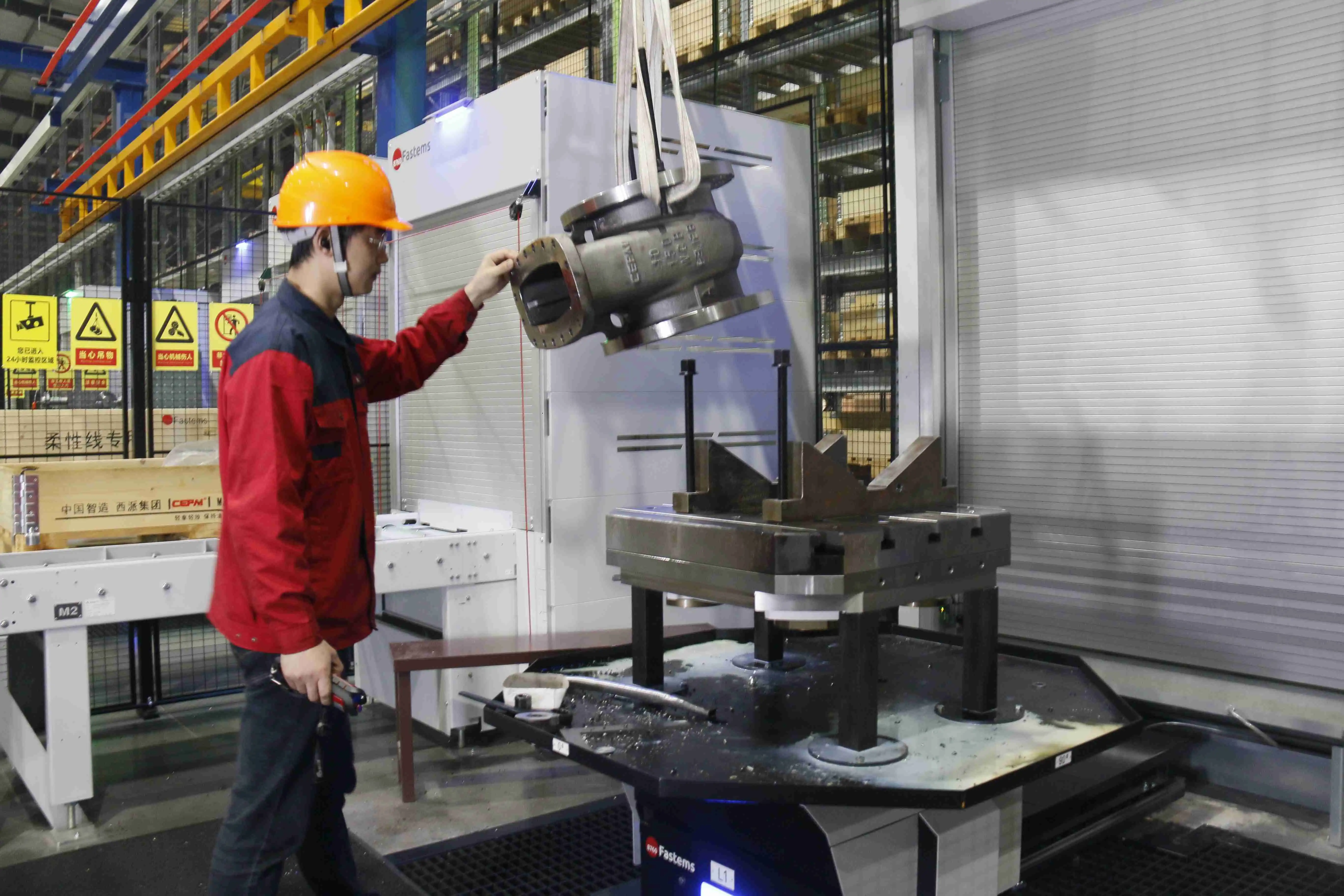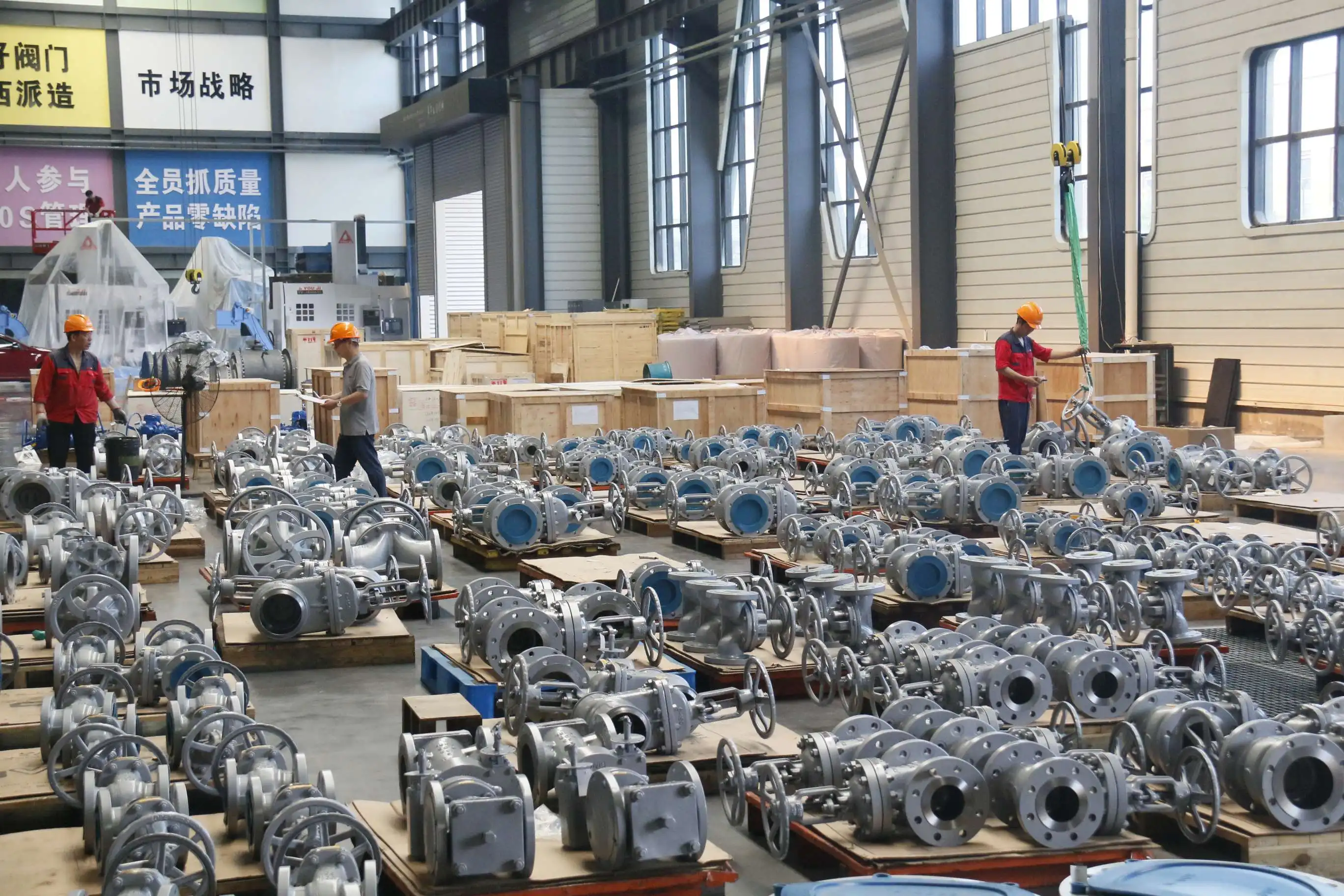The Best Control Valves for High-Temperature Steam Applications
When your industrial facility faces catastrophic equipment failures due to inadequate valve performance in extreme steam conditions, the consequences extend far beyond operational downtime. Imagine production lines grinding to a halt, safety incidents threatening personnel, and repair costs skyrocketing because your High-Temperature Control Valve couldn't withstand the demanding environment. The right selection of control valves for high-temperature steam applications becomes critical to maintaining operational excellence, ensuring safety compliance, and protecting your bottom line from costly disruptions and equipment replacements.
Understanding High-Temperature Control Valve Requirements in Steam Systems
-
Critical Design Specifications for Extreme Temperature Performance
High-Temperature Control Valves designed for steam applications must withstand operating conditions that often exceed 600°F (315°C) while maintaining precise flow control under varying pressure differentials. The fundamental challenge lies in selecting valve materials and designs that can handle thermal expansion, pressure fluctuations, and corrosive steam environments without compromising performance. Modern High-Temperature Control Valve technology incorporates specialized metallurgy, including austenitic stainless steels, Inconel superalloys, and hardened seat materials that resist thermal shock and maintain dimensional stability. The valve body construction must accommodate thermal growth patterns while preserving leak-tight sealing capabilities through multiple thermal cycles. Steam system engineers must consider the unique characteristics of superheated steam, which creates additional thermal stress on valve components compared to saturated steam applications. High-Temperature Control Valves in these environments require robust actuator systems capable of providing consistent positioning force despite temperature-induced changes in valve geometry. Advanced designs incorporate thermal barriers and heat dissipation features that protect sensitive control components while maintaining responsive operation across the full temperature range.

-
Materials Selection and Construction Standards
The selection of appropriate materials for High-Temperature Control Valve construction directly impacts service life, reliability, and maintenance requirements in steam applications. Premium valve manufacturers utilize investment casting techniques to create valve bodies from specialized alloys such as CF8M (316 stainless steel), CF3M (316L stainless steel), or exotic materials like Hastelloy C-276 for the most demanding applications. These materials offer superior resistance to steam erosion, thermal fatigue, and stress corrosion cracking that commonly affect inferior valve designs. Trim components within High-Temperature Control Valves require even more stringent material specifications, often incorporating stellite-faced surfaces, ceramic coatings, or precipitation-hardened stainless steel construction. The valve seat and disc interface represents the most critical sealing point, where thermal cycling and steam flow forces create challenging operating conditions. Advanced High-Temperature Control Valve designs feature replaceable seat rings and hard-facing applications that extend service intervals while maintaining tight shutoff capabilities throughout the valve's operational life.
Advanced Valve Technologies for Steam Service Applications
-
Intelligent Actuation Systems for High-Temperature Environments
Modern High-Temperature Control Valve systems integrate sophisticated pneumatic or electric actuators specifically designed to operate reliably in elevated temperature environments. These actuator systems incorporate thermal insulation, heat shields, and specialized sealing compounds that maintain performance integrity despite exposure to radiant heat from steam piping and equipment. Smart positioner technology enables precise valve positioning with digital feedback, allowing operators to monitor valve performance remotely and detect potential issues before they impact system operation. Electric actuator systems for High-Temperature Control Valve applications offer advantages in terms of positioning accuracy, repeatability, and integration with plant automation systems. However, these systems require careful thermal management to prevent electronic component degradation and ensure reliable operation throughout extended temperature exposure. Advanced designs incorporate cooling fins, thermal barriers, and temperature-compensated control algorithms that adapt actuator performance to changing thermal conditions while maintaining precise flow control capabilities.
-
Flow Characterization and Performance Optimization
High-Temperature Control Valve performance in steam applications depends heavily on proper flow characterization to match valve response curves with process control requirements. Steam systems often exhibit non-linear pressure-flow relationships due to density changes, pressure drops, and two-phase flow conditions that can occur during system transients. Professional valve selection requires detailed analysis of operating conditions, including maximum and minimum flow rates, pressure differentials, and temperature variations to ensure optimal valve sizing and characterization. Globe-style High-Temperature Control Valves typically provide the most versatile solution for steam service, offering inherent flow characteristics that suit most control applications. The valve plug design significantly influences flow coefficient (Cv) values, pressure recovery characteristics, and cavitation resistance. Advanced computational fluid dynamics (CFD) analysis enables manufacturers to optimize internal flow passages, minimize turbulence, and reduce noise generation while maintaining precise flow control across the full operating range.
Industry Applications and Performance Requirements
-
Power Generation and Utility Steam Systems
Power generation facilities represent one of the most demanding applications for High-Temperature Control Valve technology, where steam temperatures frequently exceed 1000°F (538°C) and pressures reach supercritical levels. These installations require valves capable of precise temperature and pressure control during startup, load-following operations, and emergency shutdown sequences. High-Temperature Control Valve systems in power plants must demonstrate exceptional reliability, as unplanned outages result in significant revenue losses and grid stability concerns. Steam turbine bypass systems, feedwater heating circuits, and main steam lines utilize specialized High-Temperature Control Valve designs engineered for rapid response and tight shutoff capabilities. The valves must accommodate severe thermal transients during plant startup and shutdown while maintaining dimensional stability and sealing integrity. Advanced materials selection, including chrome-moly steel bodies and stellite trim components, ensures long-term reliability in these challenging operating environments.
-
Petrochemical and Process Industry Applications
Petrochemical facilities utilize High-Temperature Control Valve technology throughout various process units, including steam crackers, reforming units, and distillation systems where precise temperature control directly impacts product quality and yield. These applications often involve contaminated steam containing trace chemicals that can accelerate corrosion and erosion of valve components. Specialized High-Temperature Control Valve designs incorporate corrosion-resistant materials and protective coatings that extend service life while maintaining performance reliability. Process heating systems, steam stripping operations, and reactor temperature control represent critical applications where High-Temperature Control Valve performance directly impacts production efficiency and product specifications. The valves must provide stable control performance despite varying process conditions, including pressure fluctuations, composition changes, and thermal cycling that characterize modern petrochemical operations.
Selection Criteria and Performance Evaluation
-
Engineering Considerations for Optimal Valve Selection
Proper High-Temperature Control Valve selection requires comprehensive analysis of system parameters, including operating temperature range, pressure class requirements, flow capacity needs, and environmental conditions. Steam system engineers must evaluate factors such as pipe stress analysis, thermal expansion accommodation, and maintenance accessibility when specifying valve locations and configurations. The valve's pressure-temperature rating must provide adequate safety margin above maximum operating conditions while considering potential system upset conditions. Control system integration represents another critical aspect of High-Temperature Control Valve selection, particularly regarding signal compatibility, fail-safe positioning, and diagnostic capabilities. Modern valve systems offer advanced features such as valve signature analysis, predictive maintenance alerts, and remote monitoring capabilities that enhance operational reliability and reduce maintenance costs. These intelligent features become increasingly valuable in high-temperature applications where manual inspection and maintenance present safety challenges and operational constraints.
-
Quality Standards and Certification Requirements

High-Temperature Control Valve applications in critical services require adherence to stringent quality standards and certification requirements that ensure reliable performance and safety compliance. Industry standards such as API 602, ASME B16.34, and IEC 60534 establish design criteria, testing protocols, and documentation requirements for valve manufacturers. These standards address material specifications, pressure testing procedures, and performance verification methods that validate valve suitability for high-temperature steam service. Third-party certification programs, including CE marking, SIL (Safety Integrity Level) certification, and API monogram programs, provide additional assurance of valve quality and performance reliability. Manufacturing facilities must demonstrate compliance with quality management systems such as ISO 9001, environmental management standards like ISO 14001, and occupational safety requirements including ISO 45001 to ensure consistent product quality and customer satisfaction.
Conclusion
Selecting the optimal High-Temperature Control Valve for steam applications requires careful consideration of operating conditions, material compatibility, and performance requirements to ensure reliable long-term operation. The combination of advanced materials technology, intelligent actuation systems, and proven design principles enables modern valve solutions to meet the most demanding high-temperature steam service requirements while providing enhanced operational efficiency and maintenance cost reduction.
Cooperate with CEPAI Group Co., LTD.
CEPAI Group Co., LTD. stands as a leading technology multinational company specializing in high-performance fluid control solutions, with particular expertise in High-Temperature Control Valve manufacturing for critical industrial applications. Established in January 2009 with a registered capital of 200 million yuan, our 56,000 square meter facility in Jiangsu Province represents one of Asia's most advanced valve manufacturing operations, recognized as a national high-tech enterprise and recipient of the prestigious Mayor Quality Award in 2022.
Our commitment to technological excellence is demonstrated through our comprehensive research and development capabilities, including Jiangsu Province certified enterprise Technology Center, Fluid Control Engineering Technology Research Center, and Industrial Design Center. These advanced facilities support our continuous innovation in High-Temperature Control Valve design, incorporating cutting-edge materials science and manufacturing techniques that deliver superior performance in demanding steam applications. Our products have earned international recognition through certifications including API Q1, API 6A, API 6D, CE marking, and ISO quality management systems, ensuring compliance with the most stringent global standards.
CEPAI's intelligent manufacturing approach combines precision engineering with advanced automation technology, featuring the longest high-precision intelligent manufacturing flexible production line in the Asia Pacific region. This 156 million yuan investment in manufacturing excellence enables us to deliver High-Temperature Control Valves with exceptional quality consistency and reduced lead times. Our comprehensive quality management system implements strict inspection protocols from raw material receipt through final product testing, ensuring every valve meets or exceeds customer specifications and industry standards.
As your trusted China High-Temperature Control Valve factory, China High-Temperature Control Valve supplier, and China High-Temperature Control Valve manufacturer, we offer comprehensive solutions from initial design consultation through long-term service support. Our China High-Temperature Control Valve wholesale programs provide cost-effective solutions for large-scale projects, while our High-Temperature Control Valve for sale inventory ensures rapid response to urgent requirements. Contact our technical experts at cepai@cepai.com to discuss your High-Temperature Control Valve price requirements and discover why industry leaders choose our High Quality High-Temperature Control Valve solutions for their most critical applications.
FAQ
Q: What temperature range can high-temperature control valves handle in steam applications?
A: High-temperature control valves can typically operate in steam temperatures ranging from 400°F to 1200°F (204°C to 649°C), with specialized designs capable of handling even higher temperatures depending on materials and construction.
Q: Which materials are best suited for high-temperature steam control valve construction?
A: Premium materials include austenitic stainless steels (316/316L), chrome-moly steels, Inconel superalloys, and stellite-faced trim components that provide superior resistance to thermal stress and steam erosion.
Q: How do I determine the correct valve sizing for high-temperature steam systems?
A: Proper sizing requires analysis of flow capacity (Cv), pressure drop calculations, temperature effects on steam density, and consideration of control range requirements under varying operating conditions.
Q: What maintenance practices extend the service life of high-temperature steam control valves?
A: Regular inspection of packing systems, periodic actuator calibration, thermal cycling monitoring, and scheduled replacement of wear components based on manufacturer recommendations optimize valve performance and longevity.
References
1. Smith, J.A., "Advanced Materials for High-Temperature Valve Applications", Journal of Pressure Vessel Technology, American Society of Mechanical Engineers, 2023.
2. Thompson, R.K. and Williams, M.L., "Steam System Control Valve Design and Selection Criteria", Proceedings of the International Conference on Power Plant Engineering, Institution of Mechanical Engineers, 2022.
3. Anderson, P.C., "Thermal Stress Analysis in High-Temperature Control Valve Design", International Journal of Pressure Vessels and Piping, Elsevier Science, 2023.
4. Johnson, D.R., "Performance Optimization of Control Valves in Superheated Steam Applications", Chemical Engineering Progress, American Institute of Chemical Engineers, 2022.

Get professional pre-sales technical consultation and valve selection services, customized solution services.

About CEPAI


